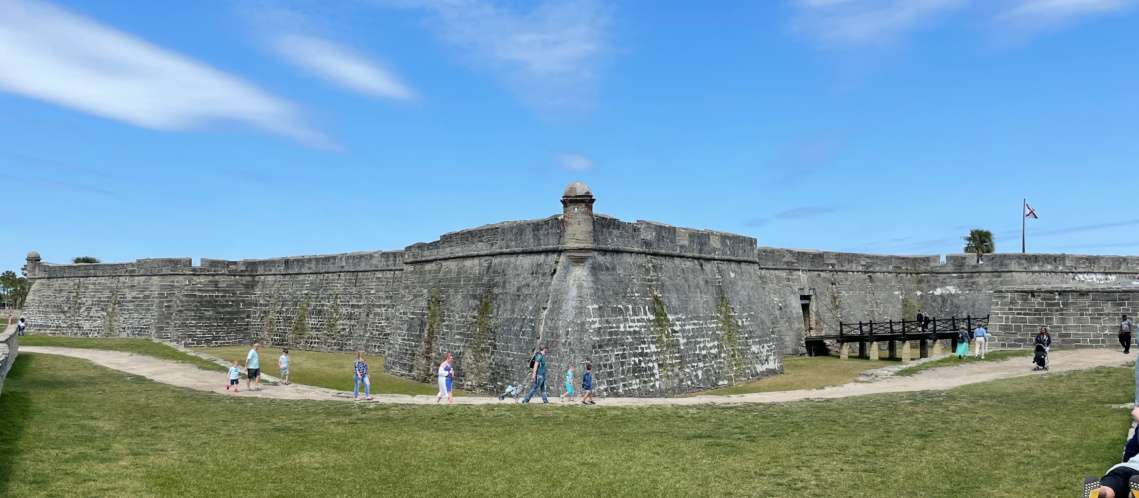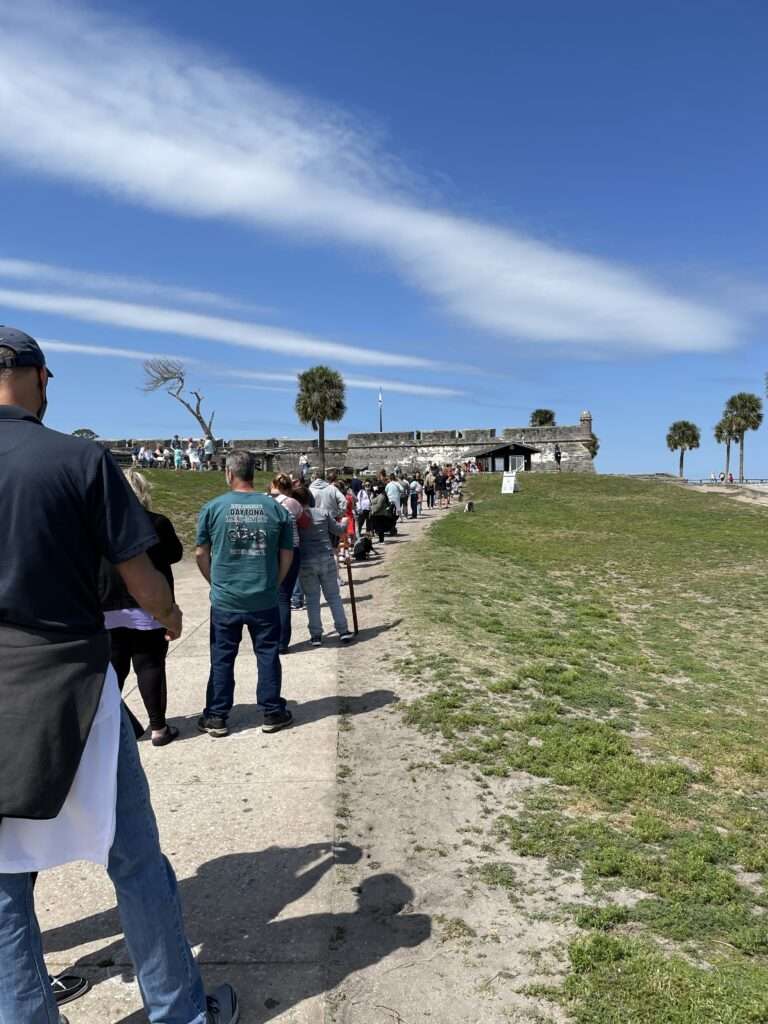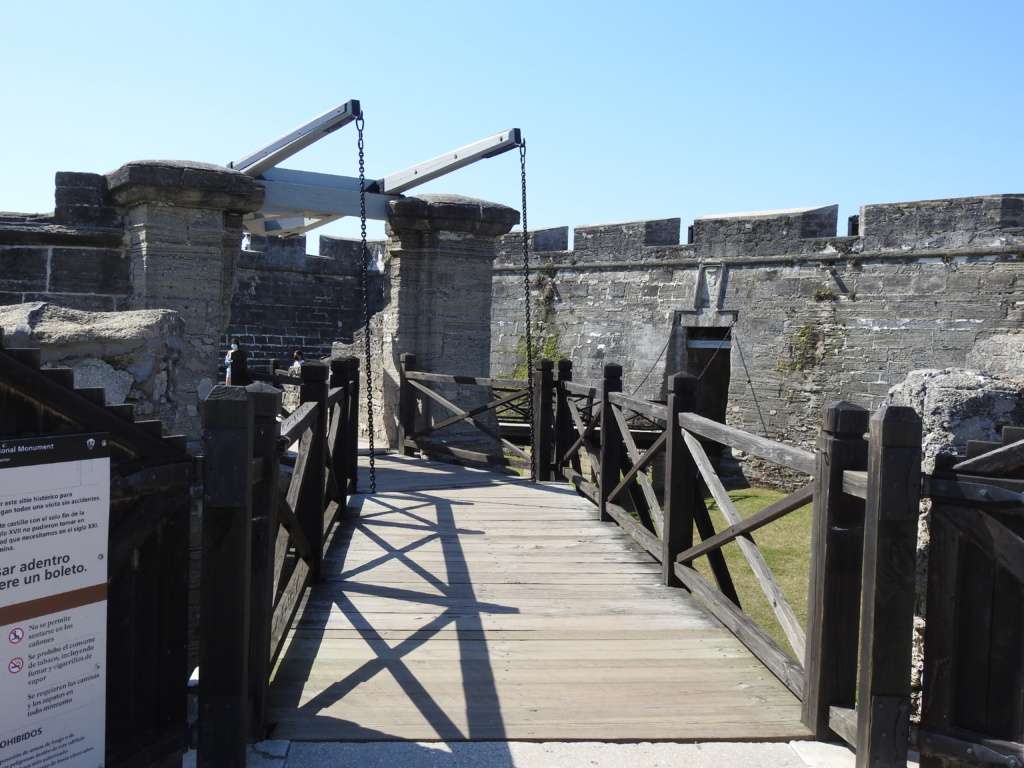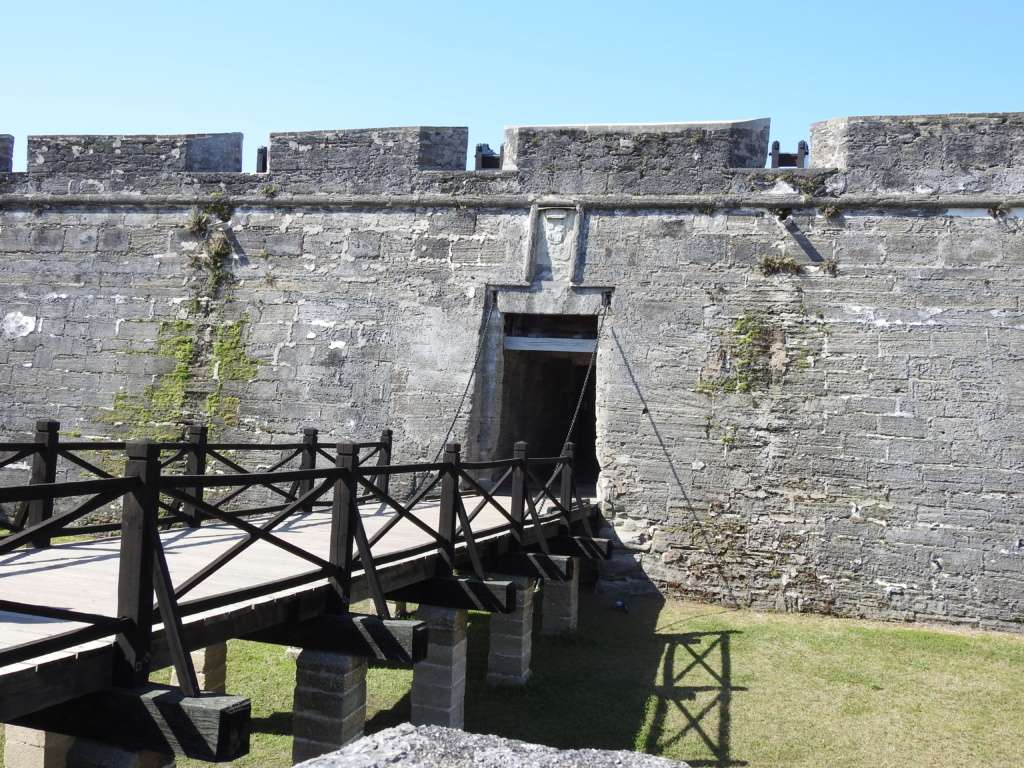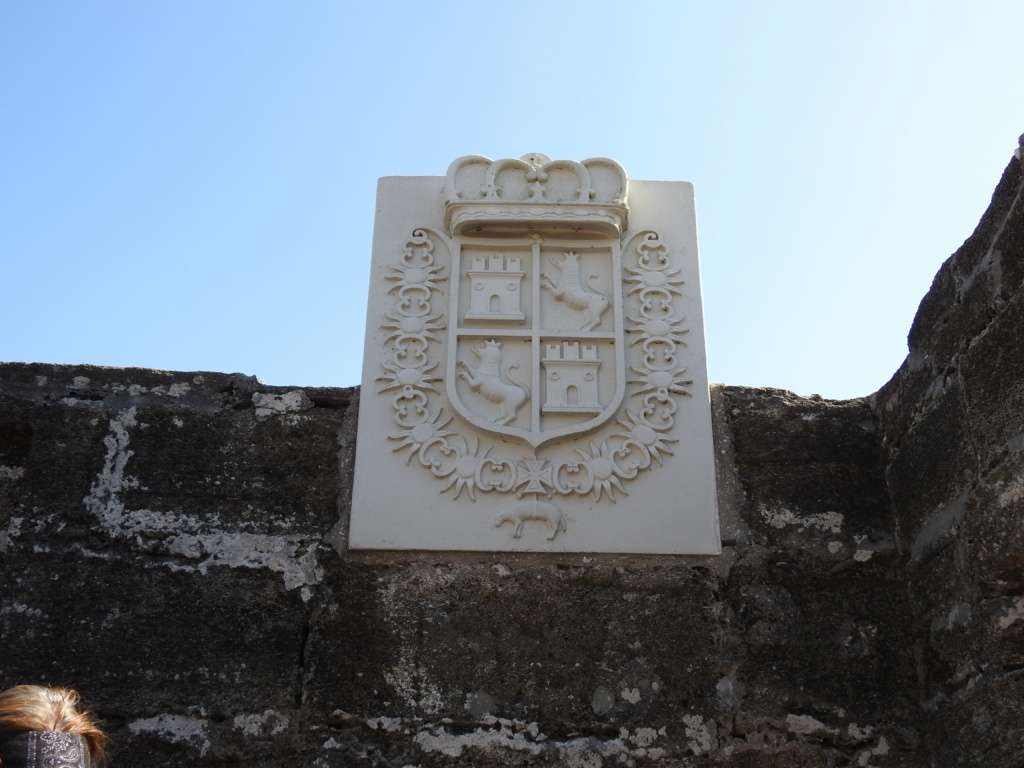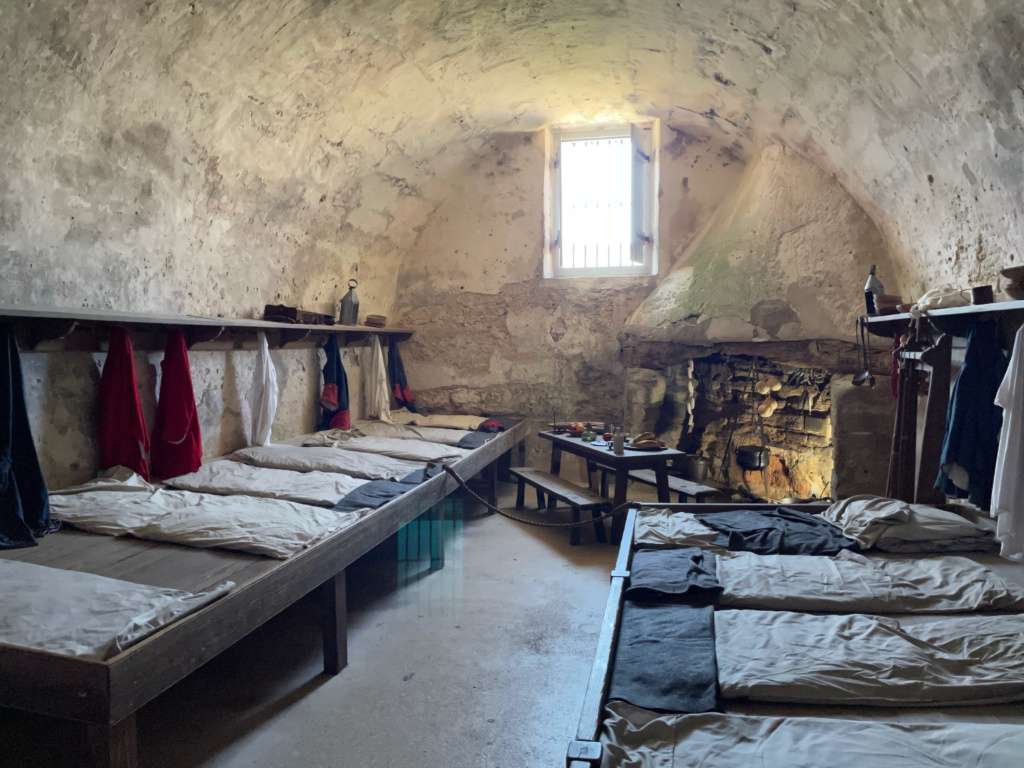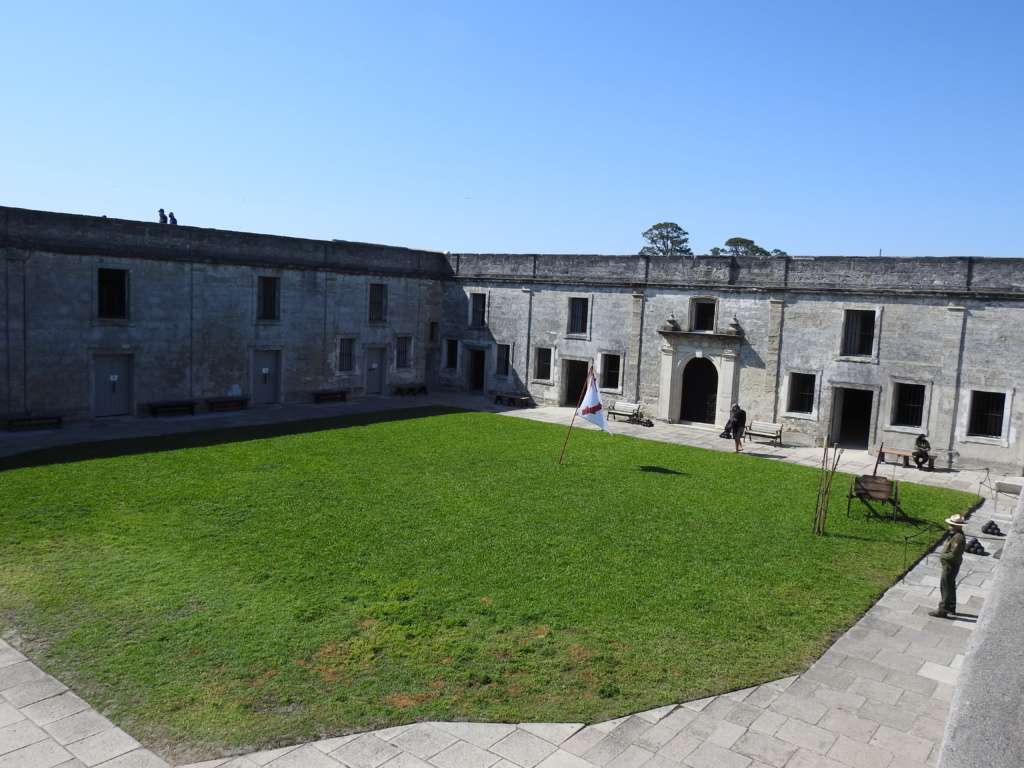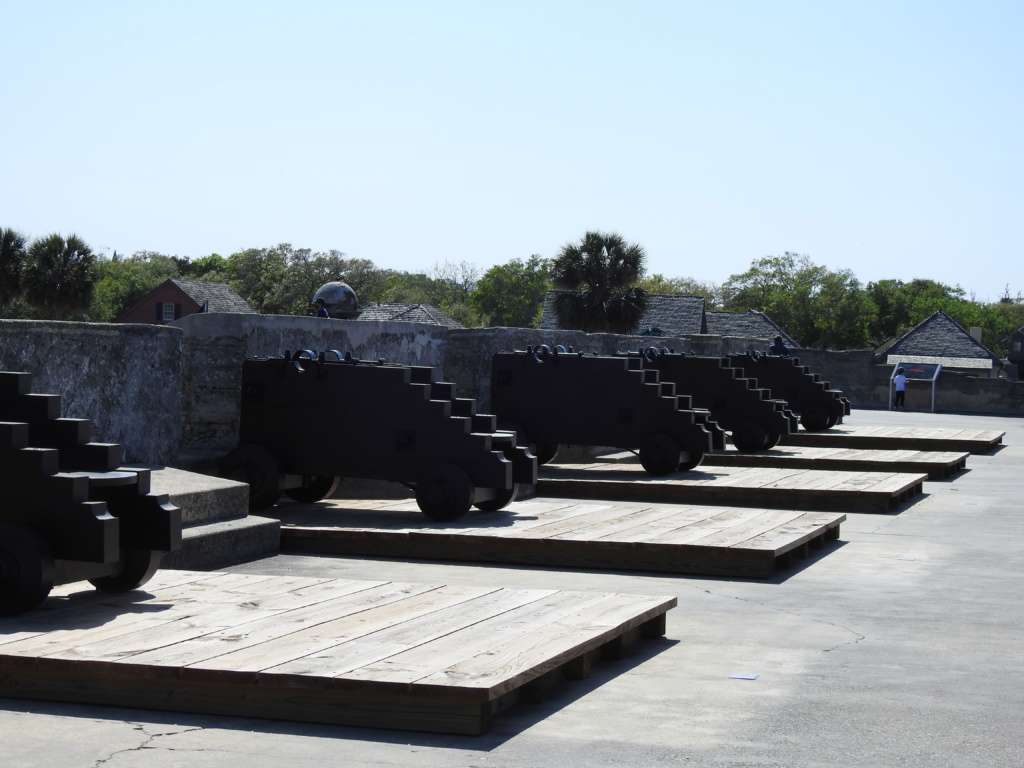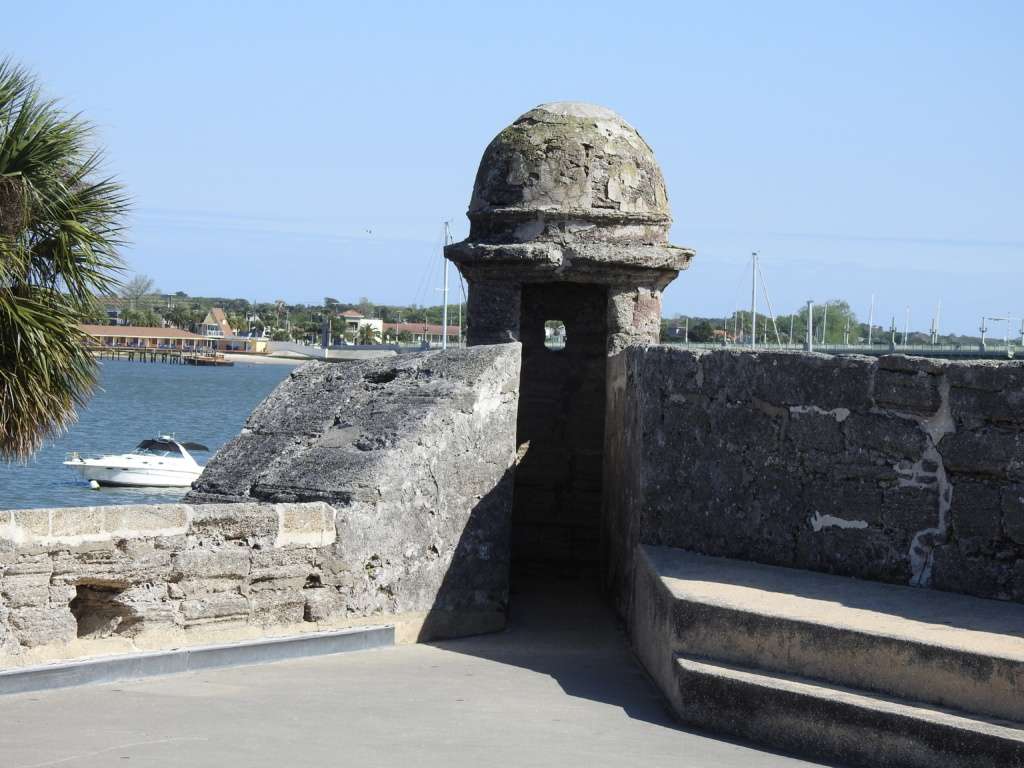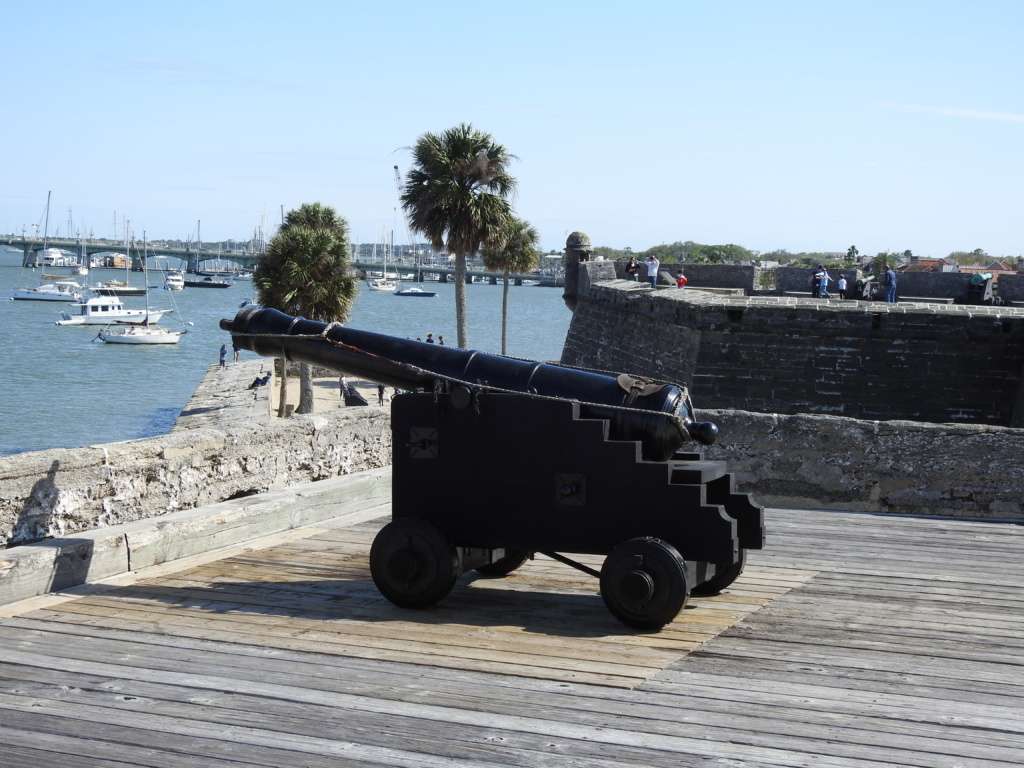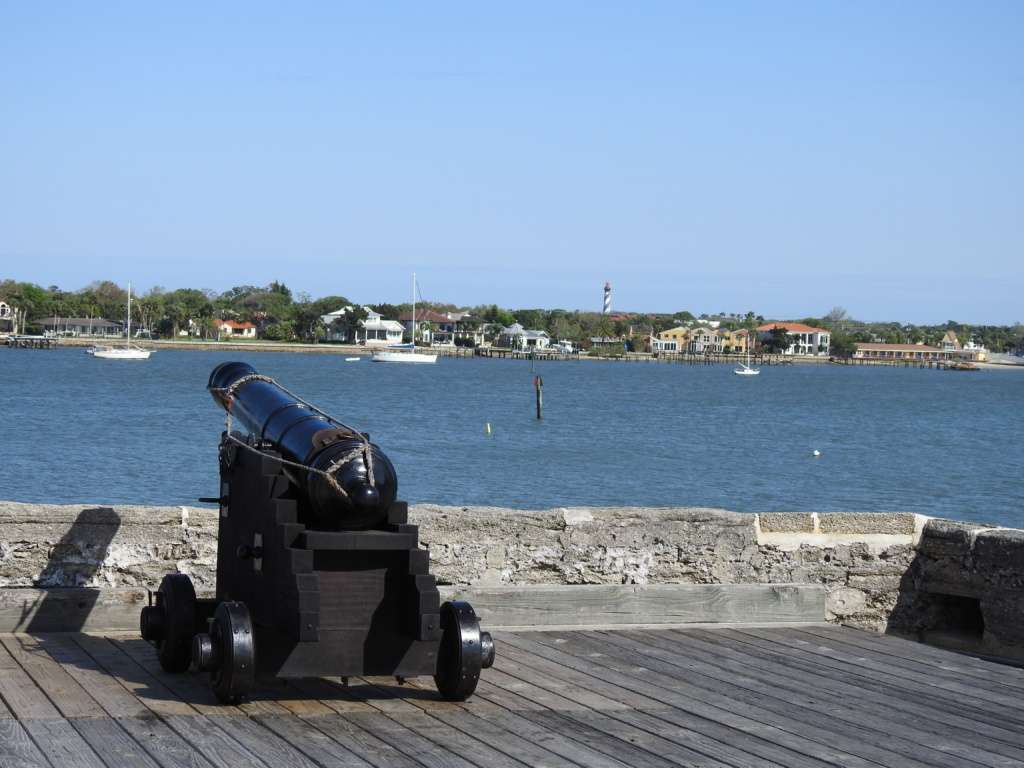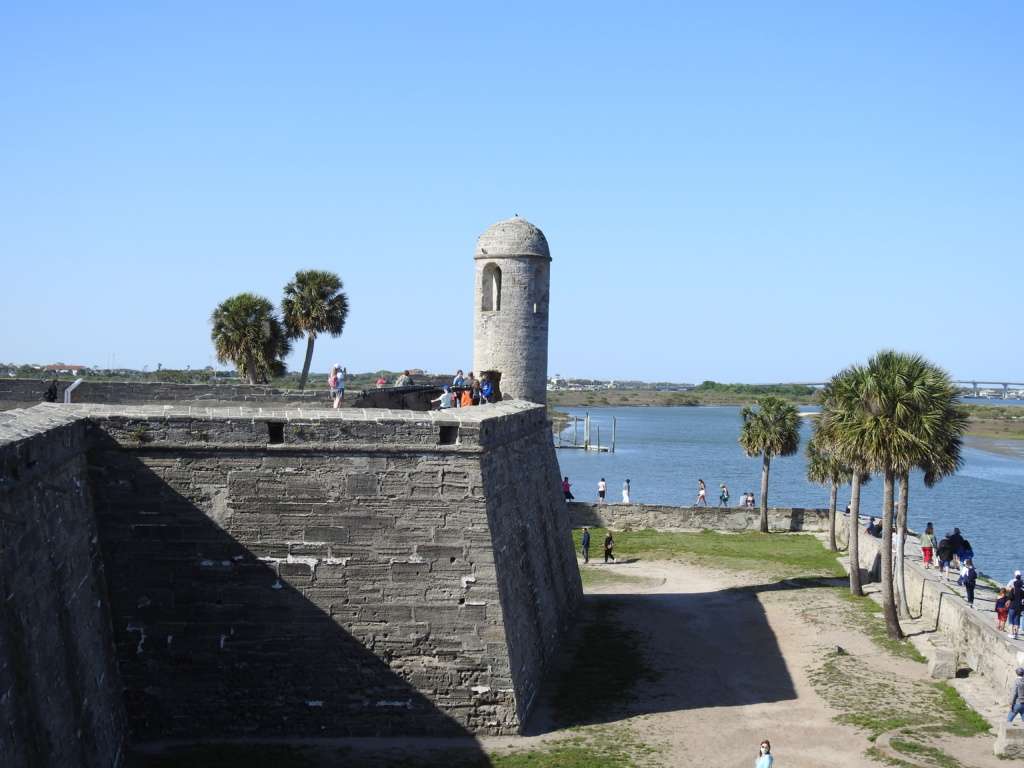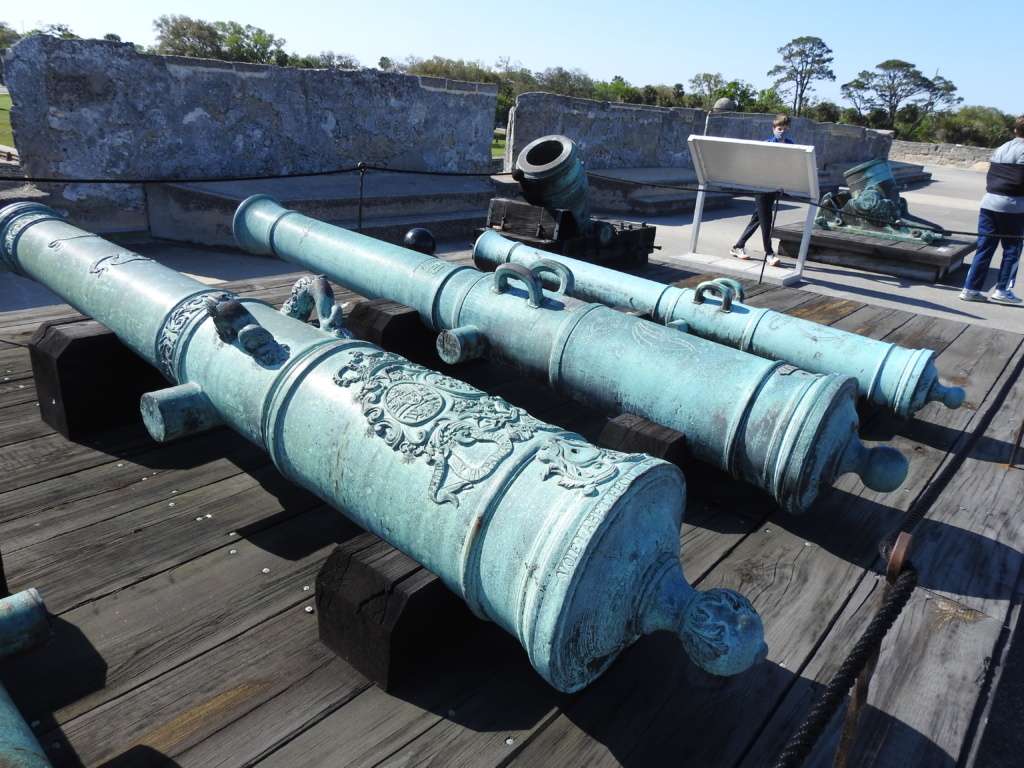As the oldest city in the US, St. Augustine holds a lot of other “oldest” distinctions within the city, among them the oldest masonry fort in the continental US. Castillo de San Marcos was built by the Spanish starting in 1672 following an English raid of the city that caused significant damage and exposed its vulnerabilities. (In total, 9 wooden forts had been burned to the ground by invaders over the years.) Construction spanned 23 years, and upon completion, the fort’s 12-foot thick coquina (shell and limestone) walls were a formidable defense that proved both impenetrable and fire-resistant.
The fort changed hands from the Spanish to the British in 1763 when Florida became a British colony but was returned to the Spanish in 1784 following the Revolutionary War. It finally came under American control when Florida became a US Territory in 1821. It remained in service until 1900 and became a national monument 24 years later. Today the fort is run by the US National Park Service.
We had walked past the fort several times during the day and the line to get in was always really long. After exploring the city for most of the day, the boys were tired and cold, and we decided to go back to the hotel to let them rest. Shortly after, I headed back out by myself to get on the line for the fort. The fort was definitely the most covid-conscious site we visited in Florida. There were park rangers monitoring the line, making sure that everybody was wearing their mask and standing on their 6-foot social distancing markers. And despite being a very large and almost entirely outdoor site, the fort itself was limiting entry to 100 people at a time. Hence the super long line!
They did have signs at regular intervals estimating how long your wait would be from that point. They proved to be fairly accurate. I waited roughly an hour on the line and we got in just after 4:00. The fort closed at 5:00 but we had plenty of time to explore. (Note that they did not cut off the line at a certain time or guarantee entry to anyone beyond a certain point so it was up to you to determine what your chance of getting in was and if you were willing to wait.) Tickets were $15 for adults and free for ages 15 and under or with a National Park Pass.
We entered the fort through its two drawbridges, the first at the ravelin and the second at the sally port. Using pulleys and counter-weights, the bridges were raised to prevent entrance to the fort. A replica of the fort’s Coat of Arms is displayed above the ravelin, while the weathered originals are found over the sally port and in an exhibit inside the fort.
After passing over the second drawbridge and entering the fort, the first interior room you can visit is Room 29. This room had beds, a table and a fireplace to cook over, although the soldiers did not actually live here. This room was primarily used for rest and free time for the overnight guards. In the connected room (Room 28), there were multiple preserved sections of wall that featured graffiti from former soldiers. Both letters and drawings were etched into the stone walls some 200 years ago and are still visible today. We all found this room really interesting and loved trying to interpret the different carvings.
From there we continued out into the main courtyard. This area was used primarily for drills but also provided protection to the city’s residents in case of attack. In 1702, 1,500 soldiers and townspeople spent 51 days here during an English attack.
We headed up the stairs to the gun deck next. From here the overall shape of the fort was evident – a square structure with four diamond shaped corners known as bastions. At one point, there were over 70 cannons positioned on this deck and the city wall below. The design allowed for the canons to be fired in any direction, and each corner of the fort had a small round tower from which soldiers could peer out to watch for enemies.
We spent a good bit of time up here, enjoying the beautiful day, the gorgeous views, and the interesting variety of cannons. When we went back down, we continued our tour of the interior rooms around the courtyard. Some rooms were recreated in their original design, while others were set up as exhibits detailing, for example, the fort’s construction or a particular period of its history.
We really enjoyed touring Castillo de San Marcos. It is a really well-maintained and interesting site. The exhibits were nicely designed and very informative. We learned a lot and were so happy to finally see the sun! Aside from the interesting history, the views of the city and bay are incredible and it is worth the time just wandering around the gun deck soaking it all in. An hour was plenty of time for us to explore the whole site without feeling rushed and even though it meant a longer wait to get in, we really appreciated the covid precautions.
